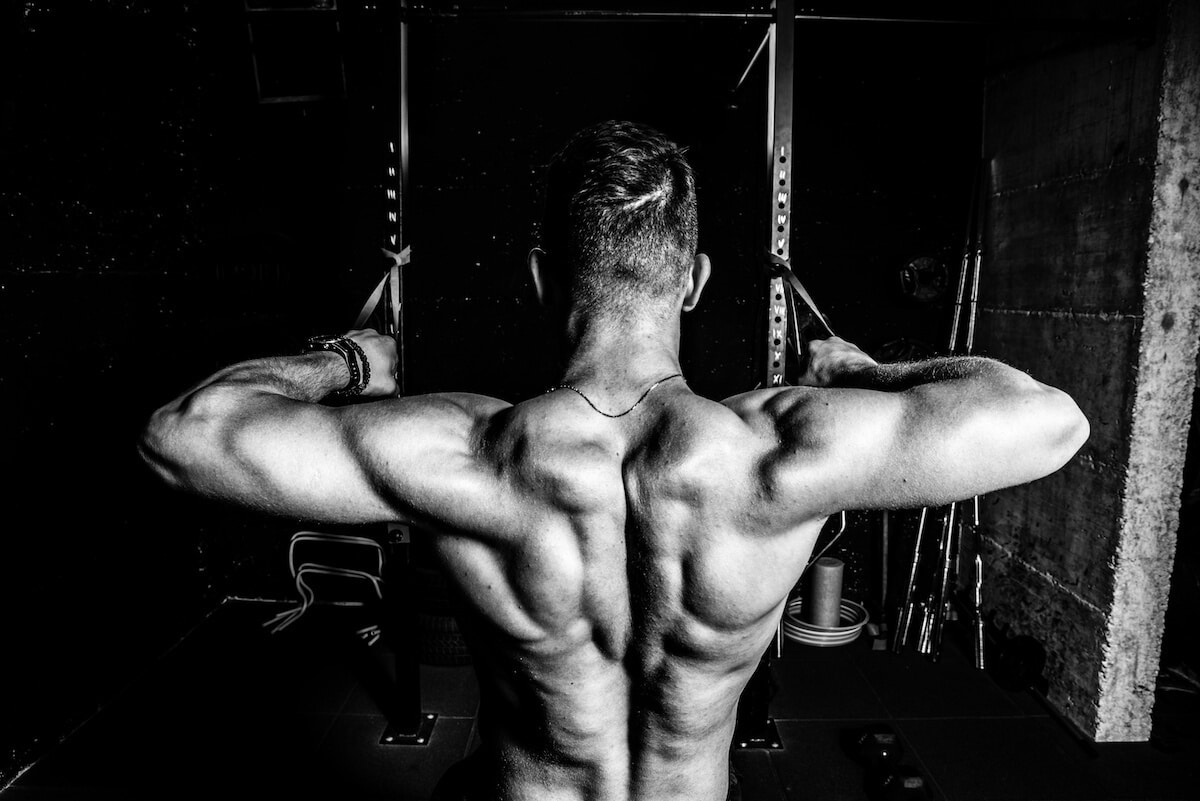
08 Jun Hypertrophy vs. Strength Training: What’s Best for You?
Regular weight training can increase your muscle tone and strength, helping you reach your fitness goals. But how do you choose between hypertrophy vs. strength training, and is there even a difference? Yes, there is a difference between the two, and your goals will help you decide which is best. Hypertrophy training helps increase muscle mass, while strength training helps you build up to lifting heavier weights.
Muscular hypertrophy refers to the increase and growth of your muscle cells. And while strength training does result in hypertrophy, the two types of training styles are slightly different. Generally, hypertrophy training will use a slightly lower weight with higher reps and sets and a shorter rest period between sets compared to strength training.
This guide will look at hypertrophy vs. strength training and how you can use each form of exercise to the best effect. We’ve also highlighted tips for getting the most from your weight training regardless of your fitness level.
Hypertrophy vs. Strength Training
The choice between hypertrophy vs. strength training comes down to your goals. Are you looking to build muscle size, improve muscle strength, or both? Hypertrophy training targets muscle growth to help you get bigger muscles, and strength gains are secondary. In contrast, strength training focuses on increasing muscular strength with an increase in size as a secondary goal.
Alternating between them will help you work towards both goals more evenly. The number of reps and sets that you do on a given day will change based on whether you’re doing hypertrophy training or strength training.
- Hypertrophy training: Hypertrophy training focuses on higher training volume and lower intensity, which means more reps and sets at a lower weight than you would use for strength training. Rest periods are key in hypertrophy training — you should pair each set with 30 to 60 seconds for rest, or use a 1:1 ratio of training time and rest time.
- Strength training: Strength training focuses on lower training volume with higher intensity, which means fewer reps and sets at a higher weight. Optimal rest periods are more extended, lasting between three and five minutes to ensure full recovery between each set.
In bodybuilding, it’s common to use both of these tactics to grow your muscle fibers while increasing the amount of weight you can lift. But you can use this same method even if you have no intentions of becoming a bodybuilder or powerlifter. Both hypertrophy and strength training are forms of resistance training that induce muscular hypertrophy and help with building strength.
And if you’re worried about looking “too bulky” as you gain muscle from a hypertrophy or strength training program, don’t be. Weightlifting is suitable for people of all skill levels, and it will help you build lean muscle. The large muscles you see on bodybuilders and powerlifters are typically the result of prolonged periods of targeted training, strict dieting, and supplement regimens. Plus, those who don’t want to use weights can always opt for a bodyweight training program using either method.
Both hypertrophy and strength training can prompt your nervous system to adapt and recruit more muscle fibers when you train. This adaptation is crucial for both high-volume and high-intensity activities.
Hypertrophy Training

Hypertrophy training is meant to improve the size of your muscles by inducing muscle hypertrophy, which is the process of increasing your muscle tissue. As a result, it helps boost your ability to work near your maximum output for longer periods, making it ideal for bodybuilders, endurance athletes, and fitness buffs.
Hypertrophy training typically uses weights, but this form of resistance training can also be performed with bodyweight exercises. For example, moves like pullups, pushups, lunges, and modifications thereof rely on your body’s weight to challenge your muscles and provide resistance.
Rest Periods
Hypertrophy training rest periods are often between 30 and 60 seconds, or a 1:1 ratio of work to rest. This short rest period helps create higher lactic acid levels in your muscles so your body can learn to perform at high levels as lactate accumulates during intense activities. Lactic acid is a byproduct of exertion, produced by blood and muscle cells, and it’s responsible for the burning sensation you feel in your muscles during intense exercise.
What Does Dedicated Hypertrophy Training Look Like?
Hypertrophy training sessions often consist of 2-5 sets of 8-12 reps per exercise. Assuming you’re working with weights, you’ll use 60-80% of your one-rep max (1RM), or the maximum weight you can lift for one repetition of a given exercise. Those with less experience will start with lower sets and reps, while workout veterans may need to work in the higher rep and set ranges.
A hypertrophy training session targeting the lower body might include three sets of 12 reps of each of the following exercises, using 70% of your 1RM:
- Deadlifts with barbell
- Elevated lunge (front foot on an elevated surface)
- Sumo squats with a dumbbell
- Landmine squats with a dumbbell
- Single-leg bridge with a weight plate
- Bodyweight glute-hamstring raise
This sample routine consists of 18 sets, and you can add more exercises that target your hamstrings, glutes, quads, and other lower body muscles if you do a longer workout. Compound exercises, like those listed above, engage multiple muscle groups instead of isolating just one muscle and are ideal for hypertrophy training. One reason for this is that you’re recruiting more muscles and joints, thus allowing you to lift more weight and build more muscle tissue.
For those who’d like to train with bodyweight only, skip the weights and focus on more challenging variations of each move. When you do bodyweight exercises, you’re using your physical weight as the resistance to challenge and grow your muscles, so you want to increase that challenge as much as possible.
For example, instead of barbell deadlifts, you might do single-leg deadlifts with no weight – this will still challenge your muscles because only one leg will be doing the work. And instead of sumo squats with a dumbbell, you might do your squats with the heel of one foot lifted. Just make sure you balance your reps on both sides with such adaptations. Dips, pullups, and pushups are other challenging bodyweight moves to try.
Strength Training

Dedicated strength-training sessions are all about improving your performance with low repetition, high-intensity activities. It’s common among powerlifters, bodybuilders, and other athletes that emphasize short duration, high output performance. Strength training doesn’t target muscular endurance — instead, it focuses on maximal strength.
Rest Periods
Strength training rest periods are usually 3-5 minutes long. These extended rest periods allow you to recover your phosphagen stores fully — the phosphagen system uses creatine phosphate to create adenosine triphosphate (ATP). ATP is an energy-storing molecule that supplies chemical energy to your muscles, helping you perform actions such as lifting heavy weights.
What Does Dedicated Strength Training Look Like?
Strength training sessions are often limited to 1-3 sets of 1-5 reps per exercise, using between 80% and 100% of your 1RM, with 3-5 minutes between each set. A sample strength training session targeting the upper body might include two sets of three reps of each of the following exercises at 95% 1RM:
- Bench press with barbell
- Overhead dumbbell press
- Dumbbell triceps extension
- Landmine press
- Barbell shrug
If you want to do more, you might do more sets or add another upper body exercise, like a decline barbell press. Isolation exercises, which directly target one muscle or area, are often ideal for strength training workouts because they allow you to create more definition in a specific area. You can perform isolation exercises using machines or free weights like dumbbells and barbells.
When you train one muscle with an isolation exercise, try to train the opposing muscle (i.e., if you train biceps, also train triceps) for balance. And don’t exclude compound moves entirely — they also work well for building strength. As you get stronger, you might use a progressive overload approach to gradually increase the weight or reps in your routine to build strength.
Combining Hypertrophy and Strength Training
When considering the benefits of hypertrophy vs. strength training, remember that you don’t have to choose just one. The two methods of training are synergistic; as you progress with one, it helps you advance the other. In addition, focusing on both compound moves for hypertrophy training and isolation for strength training benefits your overall muscle health.
Most programs that combine muscle-building hypertrophy workouts and strength-training workouts alternate between the two for balance. For example, if you’re working out three days per week, you might do two hypertrophy workouts and one day of strength training. Then, the following week, you could switch to two days of strength training and one hypertrophy session.
Tips to Get More From Your Training

To increase your results and reduce your risk of injury, educate yourself before beginning any new training routine. Here are some tips to get the most from your training:
- Work with a professional. We recommend working with an experienced personal trainer or athletic coach who can design your workouts based on your fitness level. Also, don’t forget to consult your healthcare professional before making dramatic changes to your activity level.
- Don’t skip recovery days. Recovery days are essential for building muscle — your body needs time to repair your muscle fibers and increase your strength. Try active recovery days during which you do easy, low-impact activities like walking or hiking.
- Stop if it hurts. Your muscles will burn when you push them, but if you ever feel sharp pain during an exercise, stop immediately. Do not continue exercising that day, and if the pain persists, consult your healthcare professional before resuming your workouts.
Bonus Tip: Use Supplements
Supplements help athletes supply their bodies with the nutrients they need for peak performance. But supplements aren’t just for athletes — people of all fitness levels and ages can benefit from taking workout supplements.
- Pre-workout supplements: As the name implies, pre-workout supplements are taken before exercising to improve your performance. They can supply your body with the nutrients it needs to push harder for longer.
- Post-workout supplements: Post-workout supplements help your body refuel after a strenuous training session. They’re ideal if you often feel tired and taxed following your sessions or if you do not plan to eat a meal for several hours after a workout.
- Recovery supplements: We also recommend supporting your recovery days with recovery supplements that help your muscles rebuild after strenuous training sessions.
The most important part of adding supplements to your diet is usually protein intake — muscles need protein to grow, and protein supplements help you get enough of this nutrient. Whether you take your protein shake before or after a workout matters less than your overall protein intake each day.
Look for supplements with Ingredient Optimized protein, which is designed for higher bioavailability, meaning that your body can use more of the protein you consume. Unfortunately, products with low bioavailability don’t always supply you with the amount of protein listed on the label due to low-quality ingredients.
Here are some supplements to consider:
- Plant-based protein: The ioPea from MyProtein
- Whey protein (post-workout): ioWHEY Protein from Performix
- Pre-workout: Wonder Collagen from Glaxon
Ready to Build the Body You Want?

Understanding the differences between hypertrophy vs. strength training will help you use your training routine to get the results you want. Consider your goals and adjust your rep range, the number of sets you’re performing, and the intensity of your workout routine accordingly. And if you’re not sure where to start, we recommend working with a professional personal trainer to develop your workout routines.
Don’t forget to add supplements to support your body in repairing your muscles. Ingredient Optimized products will ensure you’re getting the most from your supplements instead of wasting money on protein your body isn’t absorbing.


